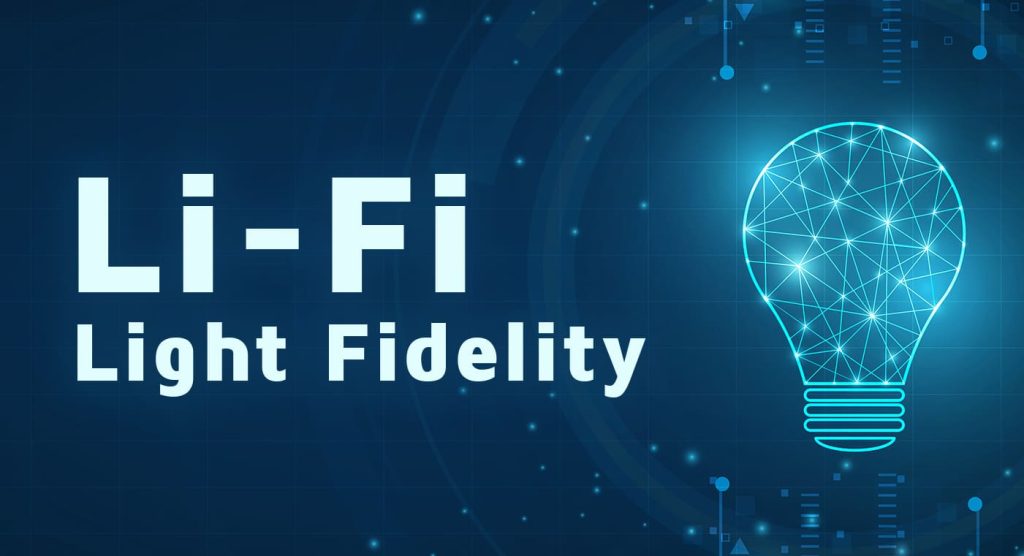In the ever-evolving world of technology, a new innovation promises to revolutionize how we connect to the internet: Light Fidelity, or Li-Fi. This emerging technology offers significant advantages over traditional Wi-Fi, though its full potential remains to be seen.
What is Li-Fi?
Li-Fi represents a groundbreaking shift from conventional Wi-Fi. While Wi-Fi relies on radio waves to transmit data, Li-Fi uses light to deliver information. This method promises unparalleled speeds, potentially up to 100 times faster than current Wi-Fi technologies. The concept of Li-Fi has been under exploration since the early 2000s, with German physicist Harald Haas and his team making pivotal contributions by demonstrating light’s ability to transmit data in both directions.
The technology gained further traction when French company Oldecomm, a prominent player in the field, began its experiments with Li-Fi in 2008. Recently, Li-Fi was tested in space when the Ariane 6 rocket launched by Europe conducted experiments involving this technology.
How Does Li-Fi Work?
Li-Fi operates through Visible Light Communications (VLC), which involves transmitting data via LED light bulbs. These bulbs emit light pulses that encode information much like Morse code. Although the light pulses are imperceptible to the human eye, specialized devices can decode these signals at high speeds.
Table 1: Comparison of Li-Fi and Wi-Fi
| Feature | Li-Fi | Wi-Fi |
|---|---|---|
| Transmission Medium | Light | Radio Waves |
| Speed | Up to 224,000 megabits per second | Up to 10,000 megabits per second |
| Security | High (confined to the lighted area) | Moderate (signal can penetrate walls) |
| Interference | None (no electromagnetic interference) | Susceptible to electromagnetic interference |
| Health Impact | Lower radiation exposure | Higher radiation exposure |
The Impact on Internet Connectivity
Since the advent of Wi-Fi in 1996, the technology has evolved significantly with updates like Wi-Fi 6 and the latest Wi-Fi 7. Despite these advancements, Li-Fi’s potential speed is a game-changer. With speeds reaching up to 224,000 megabits per second, Li-Fi could significantly benefit sectors requiring high-speed data transfer, such as smart cities, virtual reality, 4K streaming, and online gaming.
The LiFi Group, a leader in commercializing Li-Fi, emphasizes the technology’s enhanced security. According to a spokesperson, “Li-Fi offers a major security advantage because its signals are confined to the illuminated area, making unauthorized access extremely difficult.”
Li-Fi also sidesteps the electromagnetic interference common with Wi-Fi and emits less radiation, which could make it a safer option for home environments. However, since the technology is still in its nascent stages, its widespread impact will not be fully realized until it becomes more common.
Current Status and Future Prospects
Currently, Li-Fi remains primarily in the research and development phase in the US and other regions. The technology is anticipated to become more mainstream between 2024 and 2029, depending on continued investment and development. Companies like VLNComm in Charlottesville and Signify in New Jersey are at the forefront of Li-Fi innovation, laying the groundwork for its broader adoption.
The technology’s potential extends beyond residential use. It is being explored for applications in defense, government, and aviation sectors, where secure and efficient data transfer is critical. The LiFi Group is actively engaging with leading companies across various industries, including consumer electronics, automotive, and telecommunications, to explore Li-Fi’s potential.
Table 2: Projected Li-Fi Rollout Timeline
| Year Range | Projected Milestones |
|---|---|
| 2024-2025 | Early commercial trials and pilot programs |
| 2026-2027 | Expansion into consumer markets and industrial sectors |
| 2028-2029 | Widespread adoption and integration into mainstream technology |
Li-Fi holds remarkable promise as a high-speed, secure alternative to Wi-Fi, with the potential to transform connectivity across multiple sectors. While it is too early to determine if Li-Fi will completely replace Wi-Fi, the technology’s benefits are compelling. As research continues and investments grow, Li-Fi could become a pivotal part of our digital future. Stay tuned for updates on this exciting technology as it develops and becomes more integrated into everyday life.


Leave a Comment